By: Dr. Maya Singh, Chakra Healer and Sexual Wellness Expert
In the hustle and bustle of modern life, finding moments of stillness and relaxation is essential for maintaining balance and well-being. Yin Yoga offers a gentle, yet profound practice that emphasizes deep stretching and relaxation. This style of yoga involves holding poses for extended periods, allowing the body to release tension and the mind to find peace. In this article, we explore the principles, benefits, and practices of Yin Yoga, and how it can be incorporated into your daily routine for holistic health.
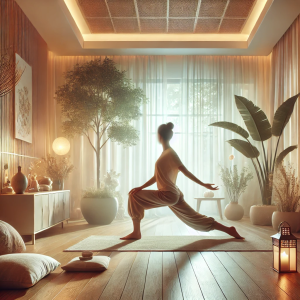
Understanding Yin Yoga
Yin Yoga is a slow-paced style of yoga that targets the deeper connective tissues of the body, such as ligaments, joints, and fascia, rather than focusing solely on the muscles. The practice involves holding poses for longer durations, typically between three to five minutes, and sometimes even longer. This extended time in poses allows for a deep stretch and increased flexibility.
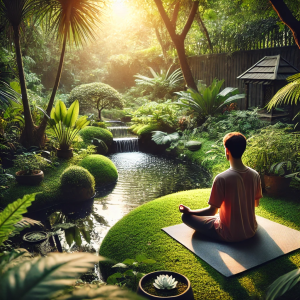
Core Elements of Yin Yoga
- Long Holds: Yin Yoga involves holding poses for extended periods, which helps to stretch and lengthen the connective tissues. This can lead to improved flexibility and joint mobility.
- Passive Stretching: Unlike more dynamic styles of yoga, Yin Yoga emphasizes passive stretching. This means that you relax into the poses and allow gravity to do the work, rather than actively engaging the muscles.
- Mindfulness and Meditation: Yin Yoga encourages a meditative approach to practice. By focusing on the breath and observing the sensations in the body, practitioners can cultivate a state of mindfulness and inner peace.
- Minimal Movement: Yin Yoga sequences typically involve fewer poses than other styles of yoga, with each pose being held for a longer duration. This minimal movement allows for a deeper exploration of each posture.

Key Poses in Yin Yoga
Certain poses are particularly effective in Yin Yoga for promoting deep stretching and relaxation. These poses help to release tension and improve flexibility in various parts of the body. Common Yin Yoga poses include:
- Butterfly Pose (Baddha Konasana): This pose stretches the inner thighs, hips, and lower back, promoting flexibility in the lower body.
- Dragon Pose (Anjaneyasana): This deep hip opener stretches the hip flexors, quadriceps, and groin, enhancing flexibility in the hips and legs.
- Caterpillar Pose (Paschimottanasana): This forward bend stretches the entire back of the body, including the spine, hamstrings, and calves.
- Sphinx Pose (Salamba Bhujangasana): This gentle backbend stretches the lower back and stimulates the spine, promoting flexibility and relaxation.
- Child’s Pose (Balasana): This resting pose calms the mind and stretches the hips, thighs, and ankles, providing a sense of comfort and relaxation.

The Benefits of Yin Yoga
- Improved Flexibility: The long holds and passive stretching in Yin Yoga help to lengthen the connective tissues, leading to increased flexibility and joint mobility.
- Enhanced Mental Clarity: The meditative nature of Yin Yoga promotes mindfulness and mental clarity, helping to reduce stress and anxiety.
- Emotional Balance: Yin Yoga supports emotional well-being by encouraging self-awareness and introspection, allowing practitioners to process and release stored emotions.
- Stress Relief: The deep relaxation and mindful approach of Yin Yoga activate the parasympathetic nervous system, promoting a state of calm and reducing stress.
- Spiritual Growth: Yin Yoga provides a pathway to spiritual growth by fostering a deeper connection with the self and promoting inner peace.
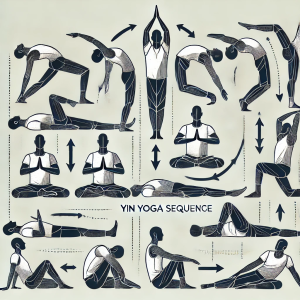
Incorporating Yin Yoga into Your Daily Routine
To fully benefit from Yin Yoga, it is important to incorporate it into your daily routine. Here are some tips to get started:
- Create a Calm Space: Designate a quiet and peaceful area in your home for your Yin Yoga practice. This space can include a yoga mat, props (like bolsters and blankets), and items that inspire you, such as candles, crystals, and soothing music.
- Set a Regular Practice Time: Establish a consistent time each day for your Yin Yoga practice. Evening sessions are particularly beneficial for winding down and promoting restful sleep.
- Start with Simple Poses: Begin with simple and accessible poses, gradually progressing to more challenging asanas as your practice evolves. Focus on relaxing into the poses and allowing gravity to do the work.
- Use Props: Props such as bolsters, blankets, and blocks can provide support and make it easier to relax into the poses, allowing for a deeper stretch.
- End with Relaxation: Always conclude your practice with a relaxation pose, such as Savasana. This allows the body and mind to integrate the benefits of the practice and promotes a sense of peace and well-being.
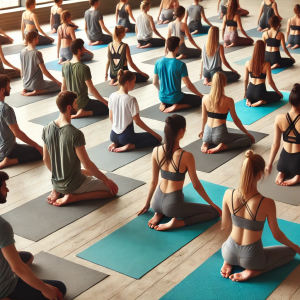
Combining Yin Yoga with Other Wellness Practices
Yin Yoga can be seamlessly integrated with other wellness practices to enhance its benefits:
- Mindfulness Meditation: Combining Yin Yoga with mindfulness meditation can deepen your relaxation and promote greater mental clarity and emotional balance.
- Aromatherapy: Using essential oils such as lavender, chamomile, or eucalyptus during your Yin Yoga practice can enhance relaxation and reduce stress.
- Massage Therapy: Regular massage therapy can complement your Yin Yoga practice by relieving muscle tension and promoting relaxation.
- Healthy Nutrition: Following a balanced and nutritious diet can support your Yin Yoga practice and overall well-being, helping to reduce stress levels.
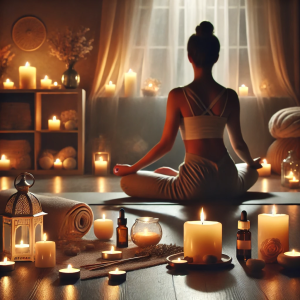
Exploring Advanced Yin Yoga Practices
As you become more comfortable with Yin Yoga, you may want to explore advanced practices to deepen your experience. Here are some techniques to consider:
- Longer Holds: Gradually increase the duration of your poses to further enhance flexibility and deepen relaxation. Holding poses for up to ten minutes can provide even greater benefits.
- Combining with Yang Yoga: Integrate more active, dynamic forms of yoga (often referred to as “Yang” yoga) with your Yin practice to create a balanced approach that includes both strength and flexibility.
- Focusing on Specific Areas: Tailor your Yin Yoga practice to target specific areas of the body that need extra attention, such as the hips, shoulders, or lower back.
- Incorporating Breathwork: Enhance your Yin Yoga practice by incorporating specific breathwork techniques, such as Ujjayi or Nadi Shodhana, to promote relaxation and mindfulness.
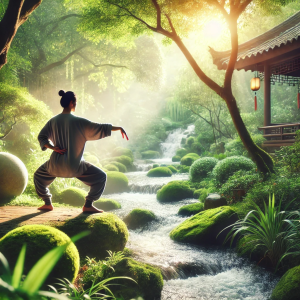
The Role of a Yin Yoga Teacher
A knowledgeable and experienced Yin Yoga teacher can greatly enhance your practice. They can provide guidance on proper alignment, offer personalized modifications, and support your emotional and mental well-being. Consider joining a Yin Yoga class or seeking private instruction to deepen your understanding and experience of the practice.
Conclusion
Yin Yoga is a gentle yet powerful practice that offers a holistic approach to deep stretching and relaxation. By incorporating Yin Yoga into your daily routine, you can experience the transformative benefits of this ancient practice, including improved flexibility, enhanced mental clarity, emotional balance, and stress relief. Whether you are a beginner or an experienced practitioner, Yin Yoga provides a pathway to deep relaxation and inner peace, promoting overall well-being and a deeper connection with yourself.
Dr. Maya Singh is a distinguished chakra healer and sexual wellness expert with a Ph.D. in Holistic Health Sciences. With over 20 years of experience in energy healing, she specializes in aligning the body's chakras to improve overall well-being and enhance sexual energy. Dr. Singh conducts workshops and private sessions, focusing on the interplay between chakra balance and sexual intimacy. Her holistic approach integrates ancient chakra wisdom with modern sexual health practices to help individuals and couples achieve deeper connections and heightened intimacy.


